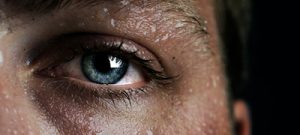Legislation signed into law by Gov. Jerry Brown will expand Cal/OSHA’s heat illness prevention standard to indoor workers.
SB 1167 requires the state workplace safety agency to devise new regulations that will apply to indoor workers starting Jan. 1, 2019. Cal/OSHA’s rulemaking body will therefore have the next two years to draft and finalize those regulations.
SB 1167 does not specify to which types of workplace the eventual regulations would apply. But a broad reading of the law means it could apply to all indoor workplaces, including air-conditioned offices.
The new law also does not specify the provisions of the eventual rules, other than that they minimize the risk of heat-related illness and injury among workers working in indoor places of employment.
The law requires that the indoor heat illness standard be based on environmental temperatures, work activity levels, and other factors.
The Department of Industrial Relations created a booklet on indoor heat illness prevention in 2012 that outlines best practices and engineering controls employers can use to minimize the risk of indoor heat illness.
According to the booklet, workers who are at greatest risk are those who:
- Wear personal protective equipment.
- Have had a heat-related illness in the past.
- Have not had sufficient time to get used to the hot working conditions (like new workers).
- Have pre-existing medical conditions.
- Take over-the-counter or prescribed medications (like medication for high blood pressure, antidepressants, diuretics or water pills).
- Are overweight.
- Use drugs and/or alcohol.
Cal/OSHA recommends using an indoor heat illness checklist during workplace inspections to look for anything that may cause heat illnesses in indoor work environments.
This includes problems with the facility, equipment and processes; jobs that require significant exertion or use of personal protective equipment; and how effective the employer’s heat illness prevention policies and procedures are.
Once heat hazards are identified, all sources of heat should be addressed. There are various methods or controls that can be used to provide effective protection.
Here are some best practices that Cal/OSHA recommends for reducing the risk of indoor heat illness:
- Rotate workers in hot, strenuous jobs.
- Slow down the pace when hot.
- Change schedules during hot weather.
- Allow workers to acclimate to working in the heat.
- Allow for breaks in areas with good ventilation so that workers can seek relief from the heat.
- Encourage workers to participate in heat stress prevention activities, such as drinking water, watching out for each other, monitoring heat, conducting inspections, and taking rest breaks.
- Ensure there are no restrictions or obstacles to workers drinking water.
- Encourage workers to drink water often when working in hot conditions.
- Provide drinking cups or drinking fountains nearby the workspace.
- Train supervisors in how to respond if someone gets ill from heat.
- In hot work areas, install equipment to monitor air temperature and humidity. It should be visible to anyone working in the area.
- Train workers in:
- How to recognize heat illness symptoms and how to respond to emergencies.
- The importance of immediately reporting to their supervisor symptoms or signs of heat illness in themselves or in co-workers.
- Your procedures for responding to symptoms of possible heat illness.
- Understanding that personal factors increase the risk of heat-related illnesses (clothing, hydration, and physical fitness, use of some medications, drugs and alcohol)
Engineering controls
Engineering controls are changes to equipment, machinery, materials or to the work processes that eliminate, reduce or isolate hazards.
They are the most effective because they do not depend on people to provide protection against hazards.
Engineering controls include:
- Installing and maintaining ventilation systems.
- Providing equipment to do a strenuous job more easily (i.e., a pallet jack or conveyor belt).
- Enclosing hot machinery and pipes.
- Installing local exhaust systems to remove heat.
- Installing local ventilation to provide cool air.
- Fixing steam leaks and repairing other broken equipment generating heat.

